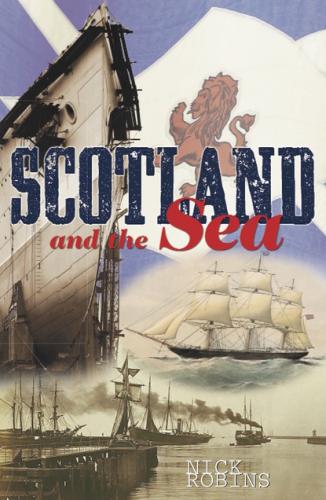Scotland and the Sea. Nick Robins
is hard to answer. That the Scottish migrant had a specific and important role in Empire is indisputable. Liberal MP Sir Charles Dilke, writing in 1888, remarked that: ‘In British settlements, from Canada to Ceylon, from Dunedin to Bombay, for every Englishman that you meet who has worked himself up to wealth from small beginnings without external aid, you find ten Scotchmen’.
Even in the nineteenth century expatriate Scots who had settled in North America dominated the tobacco trade in the south and fur-trapping in the north. In Canada, Scot Lord Mount Stephen was the driving force behind the creation of the Canadian Pacific Railway, and soon one-third of the country’s business elite were of Scottish origin. India also became a hugely important trading partner. Most of its railway engines were built at Springburn, while Dundee became the centre of jute manufacture in the world.
Education and religion were other areas of cultural life where the Scottish influence was overwhelming. Religious motives were important also; the Otago settlement in South Island New Zealand and the Waipu settlement in the North Island were populated by Scottish emigrants sponsored by the church. Dunedin (Gaelic for Edinburgh) had its own university by 1869. In Waipu, Gaelic was the first language until the 1880s and was still widely used in the 1920s.
The post-World War II Scottish emigrant ships were Captain Cook, extroopship Empire Brent and formerly the Donaldson liner Letitia, Captain Hobson, formerly the Henderson liner Amarapoora and the Anchor Line steamer Cameronia. Amarapoora had served on behalf of the International Refugee Organisation until she was taken in hand by Alex Stephen & Sons yard for conversion for the emigrant run in time for her first voyage to Wellington in May 1952 as Captain Hobson. This voyage returned the Henderson company back to its original business, that started by the Albion Line to New Zealand almost a century previously.
The three emigrant ships were operated by the Ministry of Transport to satisfy the demand for assisted passages to the Dominions. Captain Cook, still under Donaldson management and Captain Hobson, under Henderson management and named after the first Governor of New Zealand, served emigrants travelling to New Zealand, while Cameronia, still under Anchor Line ownership, served the Australian emigrant. R S McLellan described her refit:
Captain Cook (1925), ex-Empire Brent, ex-Letitia.
The writing room aboard the New Zealand Government’s emigrant ship Captain Cook. A postcard posted aboard ship in 1954 with a message which began ‘Just a line of a reminder to let you know I have not forgotten you. There were pictures, dances, games of all sorts …’
The main lounge aboard Captain Cook reflecting her more glorious past on the North Atlantic.
The after dining room, not quite so glorious.
All the troop-carrying quarters and most of the original passenger accommodation had been dismantled and new accommodation built for the carrying of emigrants. Rooms with two, four and six berths, and hot and cold running water, had been built; the original six public rooms on the promenade deck had been retained, and one of the other public rooms had been fitted out as a nursery. The main engines had been completely overhauled and the boilers and most of the auxiliaries renewed. She sailed from Glasgow on 1 November [1948] with 1,276 emigrants bound for Fremantle, Melbourne and Sydney.
Cameronia was sold to the Ministry of Transport in January 1953 to become the troopship Empire Clyde, retaining an Anchor Line crew and Anchor Line management but operated by the Sea Transport Service out of Glasgow. Captain Hobson sailed under berth arrangements with Shaw Savill & Albion and was transferred to the New Zealand government in 1951, complete with her Henderson Line crew. She completed her final voyage to Wellington in May 1958 and was later sold for demolition. Empire Clyde was withdrawn and scrapped in 1957. In 1960 the government-sponsored service ceased and the last of the Scottish emigrant ships, Captain Cook, was laid up and withdrawn. Thereafter, the Italian-owned Sitmar Line offered cheap fares for emigrating families until the late 1960s, after which the emigrant service was operated by air. It is ironic that an Italian-owned company should provide a sea service for British emigrants, much as the Anchor Line had done earlier for Italian emigrants.
Empire Clyde (1921), formerly the Anchor Line’s Cameronia, served on the post-World War II assisted passage to Australia for the Ministry of Transport
Конец ознакомительного фрагмента.
Текст предоставлен ООО «ЛитРес».
Прочитайте эту книгу целиком, купив полную легальную версию на ЛитРес.
Безопасно оплатить книгу можно банковской картой Visa, MasterCard, Maestro, со счета мобильного телефона, с платежного терминала, в салоне МТС или Связной, через PayPal, WebMoney, Яндекс.Деньги, QIWI Кошелек, бонусными картами или другим удобным Вам способом.
